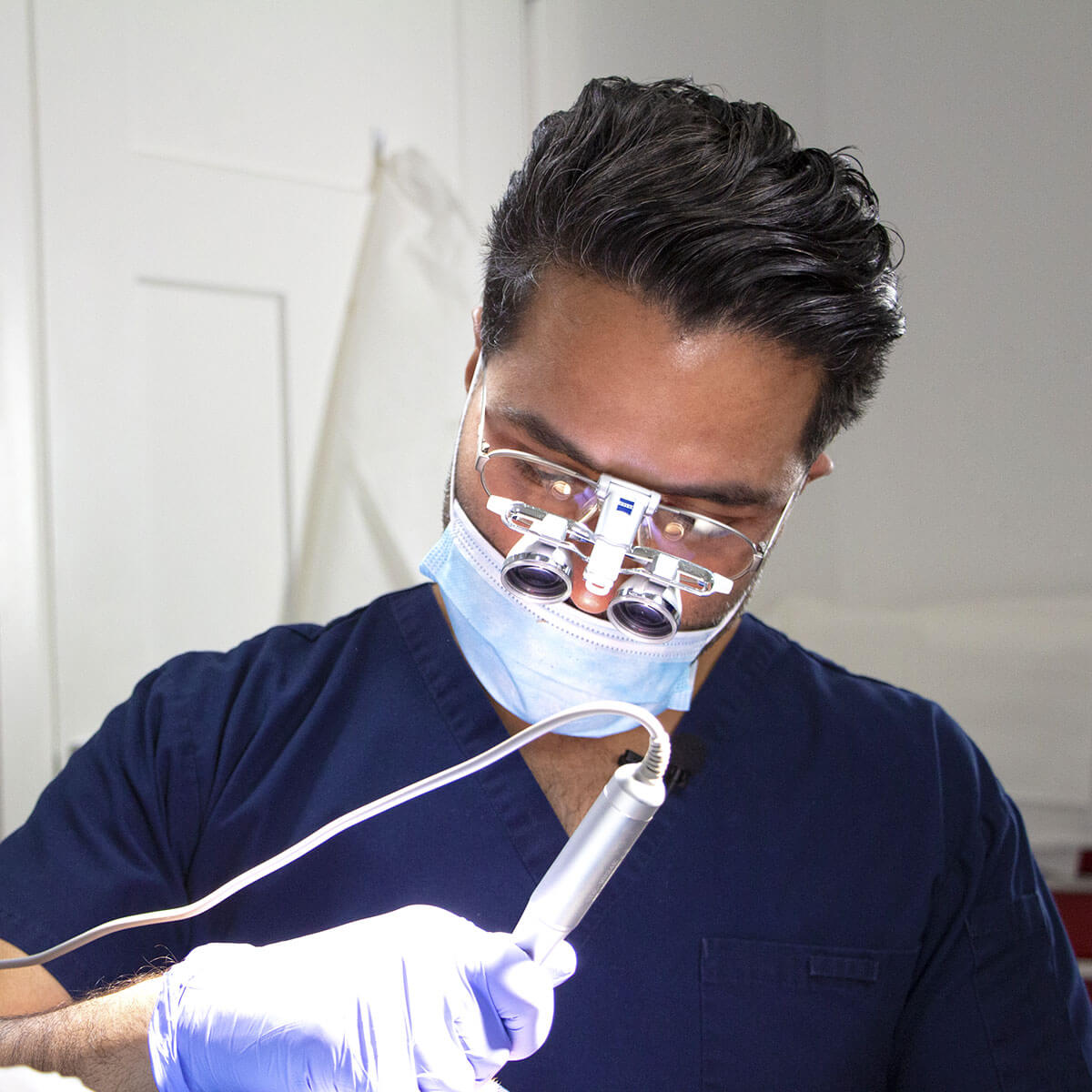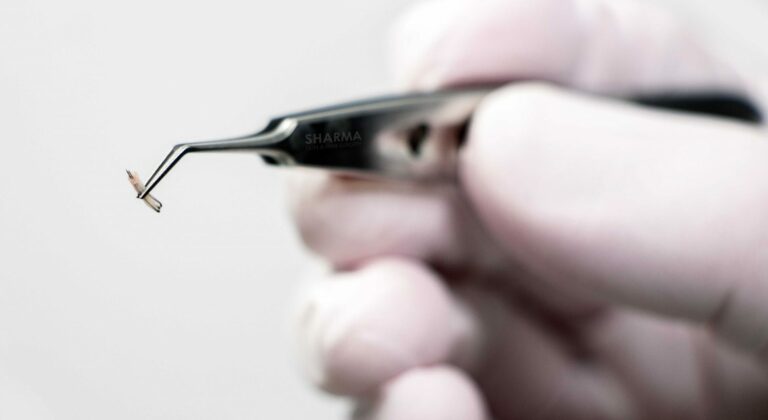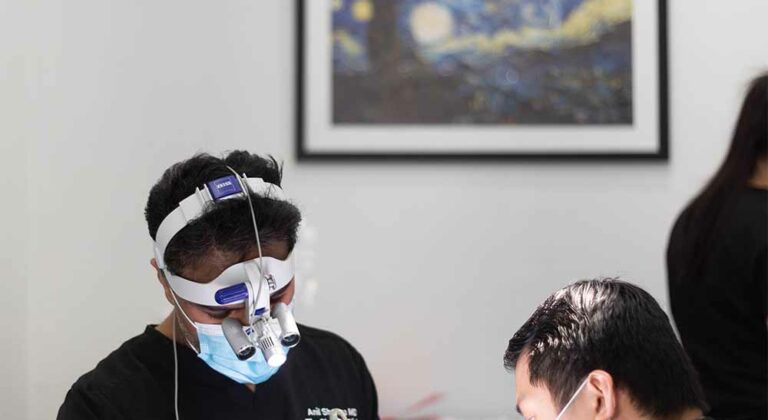Like any medical procedure, hair transplants come with potential side effects. Most side effects are mild, temporary, and manageable, but it’s crucial to understand what to expect post-surgery to ensure a smooth recovery and optimal results. While rare, side effects of hair transplants may sometimes persist, especially if proper post-operative care is not followed.
Read on to find out more about the potential side effects of hair transplants and how to minimize them.
Common side effects post-procedure and how to manage them
Like with any operation, patients can expect to experience side effects after a hair transplant. Let’s take a closer look at the most common ones and how best to manage them.
Swelling and redness
Swelling and redness around the treated area can be common after a hair transplant, usually appearing within the first few days. This is a natural part of the body’s healing process and typically affects the forehead and surrounding areas.
To manage swelling, applying a cold compress to the forehead (avoiding direct contact with the scalp to protect the newly implanted follicles). This can help reduce inflammation and constrict blood vessels. Keeping your head elevated while sleeping can also alleviate swelling. Most swelling and redness should subside within ten days.
How to sleep after a hair transplantPain or discomfort
Post-procedure, you can expect to experience some mild pain or discomfort, particularly in the donor and recipient sites. Surgeons often prescribe pain relievers to alleviate this discomfort, and with the proper post-procedure care any pain typically diminishes within a few days. Over-the-counter medications such as ibuprofen or acetaminophen may also be recommended to reduce soreness.
Scabbing or crusting
Scabs or crusting may form around the hair grafts as they heal. Avoid picking at them to prevent dislodging the grafts. The crusting should fall off naturally after about 10-14 days. Gentle shampooing and following your surgeon’s instructions can help manage this phase.
Temporary hair loss (shock loss)
Around the second to fourth week post-procedure, it’s common for patients to experience temporary hair loss (also known as shock loss). This is a completely normal part of the healing process as the transplanted follicles enter a dormant phase before new hair growth starts. These lost hairs typically regrow within 3 to 5 months.
Are there any potential complications?
Though rare, complications can occur during the hair transplant recovery period — especially in cases where an unqualified or inexperienced surgeon performs the procedure. Recognizing early signs and seeking prompt treatment can prevent further issues. Here are some of the post-surgery potential complications:
- Infection: Infections are uncommon but can occur if the scalp is not properly cared for post-surgery. Signs include increased redness, swelling, pus, and pain around the graft sites. Maintaining proper hygiene during recovery and ensuring you take any antibiotics prescribed post-surgery is key to preventing infection.
- Poor graft survival: In some cases, hair grafts may not survive the transplantation process. This can be due to inadequate surgical technique, improper handling of the grafts, or insufficient blood supply to the grafts.
- Scarring: Scarring is more common with those who have undergone a FUT procedure, in which a strip of tissue is removed from the scalp. Patients may notice linear scars in the donor area. While these scars can be concealed with hair growth, some patients may experience keloid scarring or visible marks. Choosing an experienced surgeon and discussing the risk of scarring beforehand can help mitigate this issue.
Complications are rare if you follow pre- and post-operative instructions.
How to manage and minimize risk
Follow these three tips to help manage and minimize risk post-procedure.
- Choose the right clinic and surgeon: Researching and selecting a reputable clinic with board-certified surgeons is critical. Opt for a surgeon with experience in hair transplants and a proven track record.
- Review before-and-after results: Examining a clinic’s before-and-after case studies gallery can provide insight into the surgeon’s skill and the results you can expect.
- Follow post-procedure care instructions: Strictly adhering to the post-operative care instructions provided by your surgeon will significantly reduce the risk of complications. This includes proper wound care, avoiding strenuous activity, and taking prescribed medications.
At The Sharma Clinic, we pride ourselves on providing top-quality care, ensuring your hair transplant journey is both safe and effective. With experienced surgeons and a trusted track record, you can feel confident in achieving the best possible results. Reach out today to schedule a consultation and take the next step toward your hair restoration goals.
BOOK NOW
Talk to a Hair Transplant Expert
Are you looking for the most effective treatment plan to reverse the effects of hair loss? Dr. Sharma has a long-lasting commitment to offering the best services in the industry. Not only is he experienced with hair loss treatment, but he is passionate about helping each patient receive excellent results.

Share this:
Medically reviewed by
Updated on
Have a question?
Find out how we can help you look feel your absolute best
Contact us 780-476-7970


